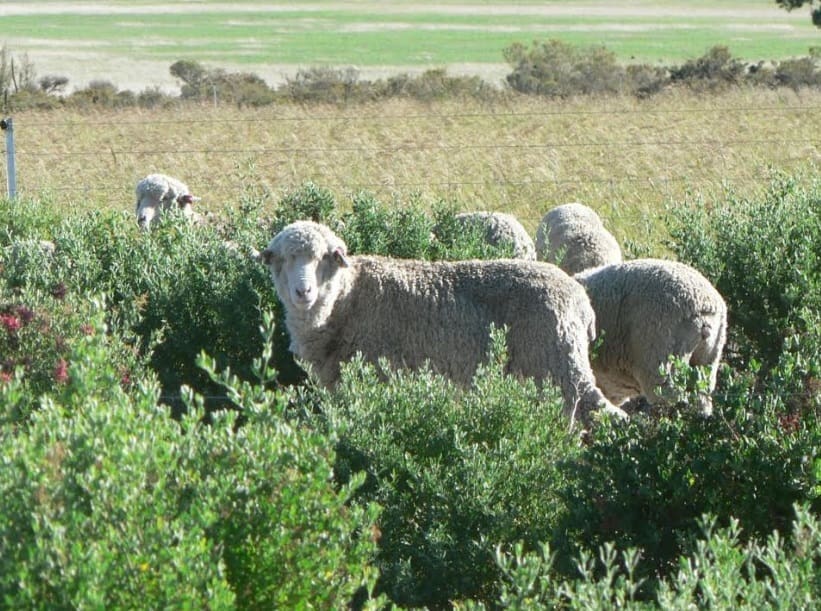
Sheep grazing native salt bush in Western Australia.
NATIVE forage shrubs are being considered as a potential super food for livestock, as well as being able to boost lamb survival, limit worm impact and reduce methane emissions.
The University of Western Australia today said a decade of research on native forage shrubs with collaborators has found a multitude of benefits.
Research with a range of native shrubs on UWA’s 1600 hectare Farm Ridgefield near Pingelly, has been the basis of this ongoing research that continues to uncover the benefits of introducing native shrubs into a mixed pasture grazing system.
Professor Philip Vercoe from UWA’s Institute of Agriculture and School of Agriculture and Environment said multidisciplinary research projects based on the native shrubs have shown improvements to both productivity and natural resource management, and he believes there is much more to be discovered and measured.
These benefits include the availability of green nutritious plants in autumn, using areas not suitable for crops, drought-resistance and drought-responsive strategies, shade and shelter, biodiversity, and carbon storage.
One of the key results from the research is that sheep grazing on a mix of native shrubs in summer and autumn can achieve good weight gains and minimise the need for hand feeding.
“We have also found that grazing on these shrubs can reduce methane emissions intensity by about 25 percent during this autumn period.
“This is exciting because it is evidence that shrubs can help achieve increases in weight gain and improve profitability as well as reduce the environmental impact of livestock industries – an important finding as we move towards making the red meat industry carbon neutral by 2030,” Professor Vercoe said.
Professor Vercoe said that there is anecdotal evidence that lamb survival from twin-bearing ewes is 15-20pc higher when lambing occurs in the native shrub paddock, although no experimental data has been obtained on UWA Farm Ridgefield as yet.
“Shelter alone can improve lamb survival, but we think there are a number of other factors influencing what we have observed.
“For example, the extra nutritional value of the shrubs, and impacts to the mother-young behaviour are likely to influence lamb survival, which we intend to explore in future research,” Professor Vercoe said.
“In addition, grazing shrubs has the potential to combat gastrointestinal worms, which we intend to measure in animals in the field.”
Research to look at how the shrub-based system is impacting water dynamics and important soil characteristics in the paddock is currently being investigated by postgraduate students in a collaboration bringing together agricultural and environmental scientists.
These research projects have been conducted in collaboration with the Commonwealth Scientific Industry Research Organisation, the South Australian Research and Development Institute, Meat and Livestock Australia, the Department of Primary Industries and Regional Development and UWA, with support from the Australian Department of Agriculture and Water Resources.
Source: UWA.

Not in the least suprised to see these findings….would expect native species to be tapping into nutrient sources that would add much to the dietary diversity of the grazing livestock…trace minerals etc…as they are adapted to their specific environment.
Look forward to further, possibly controlled, studies, to assess specifics of the benefits.